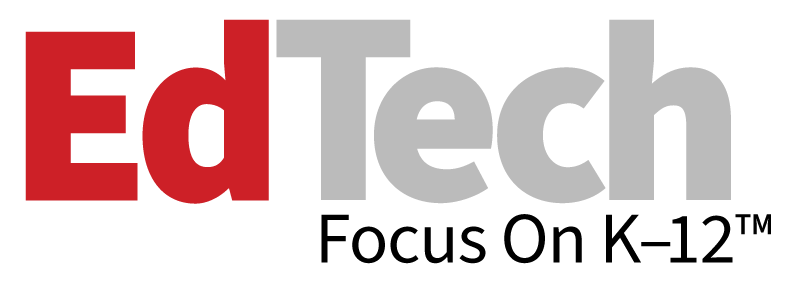Since the early days of internet access in K–12 schools, there has been a need to protect students from inappropriate content with filtering and restricted access. Beyond redirecting their attention from games on their devices toward completing homework and projects, filters are often a requirement for federal funding, mandated by the Children’s Internet Protection Act.
These filters also provide a level of liability protection, serving as insurance that schools are maintaining a safe online experience for students on their provided devices.
Facing these restrictions — and all too often armed with an innate sense of curiosity and rebellion — it’s not surprising that some students try to buck the system and bypass school web filters.
However, with the help of artificial intelligence, these filters have become stronger, thwarting even the savviest students’ attempts to subvert them.
Click the banner below to discover how education leaders can implement AI.
The Limitations of Blocking and Filtering Websites in the Past
Website filters have historically used domains to decide what students can and cannot access on the internet. When schools rely solely on a filter that has a list of “good” and “bad” websites, they miss the gray areas. Sites like YouTube, Reddit and other social media platforms are often universally blocked. Additionally, students have figured out how to use VPNs and proxies, which mask their true destination and intent online.
“Instead of looking at the domain level, start looking at the actual behavior and content that a student is exhibiting on a website,” says Tyler Shaddix, co-founder and board member of GoGuardian.
Technology has advanced faster than traditional web filters, Shaddix adds. Students have better work-arounds that obscure where they go and what they do, whether that’s playing video games or accessing something more concerning. This means some schools have zero visibility into the important parts of their students’ online behavior.
On top of that, sources estimate about 252,000 new websites are created every day. With so many new domains, it becomes impossible for IT administrators to keep track of “good versus bad” websites and act accordingly.
AI-Backed Content Filtering Bridges Access and Safety
Going beyond traditional website filters, companies like GoGuardian and Fortinet provide content filters. These solutions crawl the sites that students access, going much deeper than the domain or a disguised URL. They are meant to guide students’ activity online, while also providing school personnel insight into what students are searching for, including alerts for self-harm or at-risk behavior. New AI features make content filters even more powerful.
“Real-time AI content filtering on a student device becomes so powerful because, at the end of the day, all anyone really cares about is what the student is actually doing, and the only way you can figure that out is by seeing what they’re doing on their device in real time,” says Shaddix.
252,000
The approximate number of new websites created every day
Source: siteefy.com, “How Many Websites Are There in the World?” March 20, 2025
Website filtering is still possible, but products that incorporate AI, such as GoGuardian Admin, also look at the true internet activity. Schools can apply filters based on content categories to comply with their policies and regulations, and with GoGuardian Smart Alerts for Proxies, they can detect and stop students who attempt to bypass protections. The technology can also be applied to personal devices in schools that have bring-your-own-device policies.
GoGuardian has seen a 62% reduction in inappropriate device use in their customers’ students. In many cases, students tested the waters, realized they were being watched and corrected their online behavior.
“Students need to know that you’re aware and are actively working to keep them on task,” says Susan Uram, director of educational technology for Rockford Public Schools in Illinois.
DISCOVER: K–12 schools view technology as a guardrail for good digital citizenship.
“We’re creating a better relationship between students and technology, where they understand what the limits are and what fair or acceptable use looks like,” says Shaddix. “Every time we roll out something like proxy detection, it allows IT admins to open up even more of the internet. Our goal is to keep the internet as open as possible but as safe as necessary.”
Make Internet Safety a Teachable Moment for K–12 Students
When children are given devices at a young age at home for the purposes of watching a show or playing games, schools face the challenge of redefining what these devices are meant for in a classroom setting.
One of the first steps schools and districts should take is reviewing their acceptable use policy and ensuring that it’s up to date, with clear language to explain how students are expected to use their devices.
Uram emphasizes the importance of also having conversations with students about the appropriate use of devices.
“There is a digital citizenship component in understanding how to prioritize what you’re doing when so many distractions exist,” Uram says. “It’s not just ‘pay attention because I told you to,’ but ‘pay attention because this is an important learning opportunity.’ Students have to learn when it’s time to be on task and when it’s OK to be off task.”
While Uram’s school wasn’t initially searching for an AI-based product, she’s ultimately glad they have it: The list of ways that URLs can be masked is extensive and constantly changing, rendering an IT administrator’s job of keeping the internet “safe” for students nearly impossible. With AI, they can constantly monitor everything.
“It’s amazing how many things we have now stopped kids from getting to, things that would have gone right by traditional filters,” says Uram.
UP NEXT: Help students develop a positive digital footprint.












